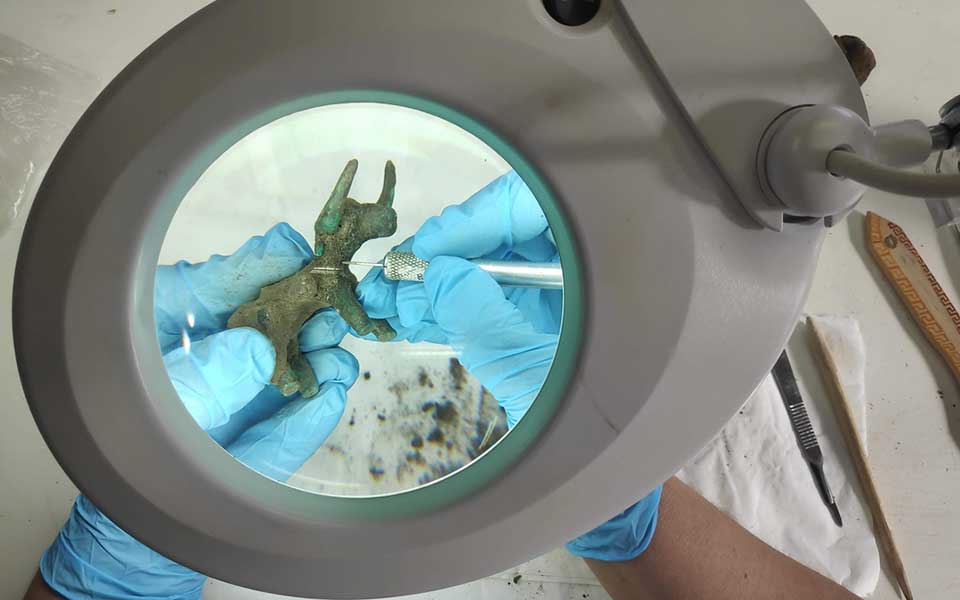During a recent inspection at the archaeological site of ancient Olympia, a tiny blue-green horn protruding from the ground caught the eye of Mrs Zacharoula Leventouris, an archaeologist at the Ephorate of Antiquities of Ilia in western Greece.
Severe weather and heavy rainstorms battered the region around Olympia in February, washing away layers of topsoil at the UNESCO World Heritage Site. The archaeologists were surveying the damage in the area of the temple and great altar of Zeus when Mrs Leventouris spotted the find, carefully removing the soil around the horn to reveal a small, intact bronze figurine of a bull.
The precious artifact was immediately transferred to the on-site laboratory, where conservationists cleaned and examined it.
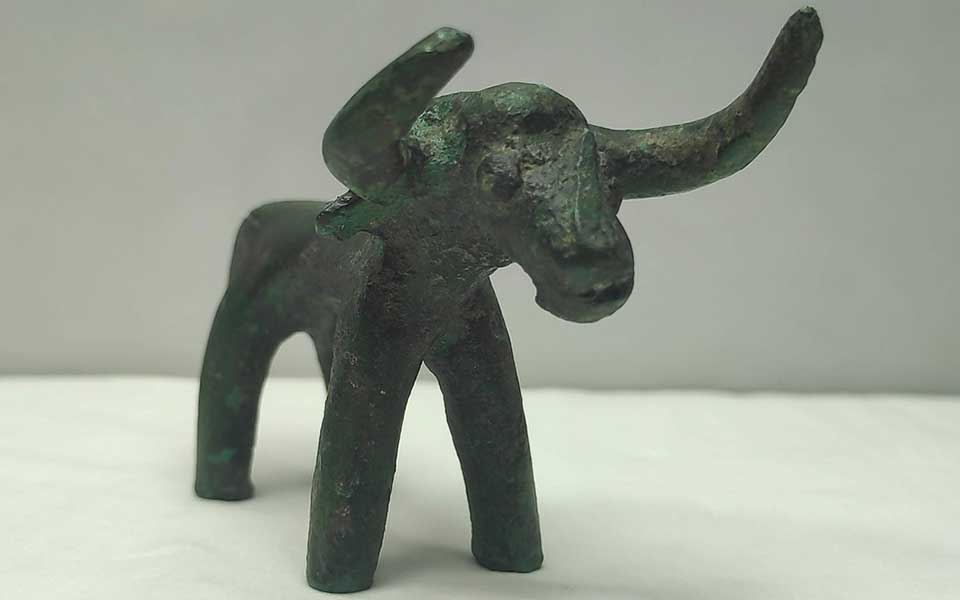
© Ministry of Culture and Sports
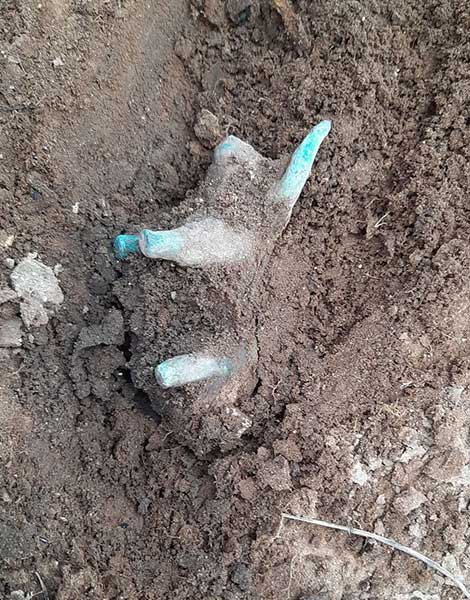
© Ministry of Culture and Sports

© Ministry of Culture and Sports
Votive offering
On first inspection, the well-made and well-preserved figurine is typologically similar to votive offerings dedicated to Zeus during the Geometric Period (1050–700 BC), many on display in the second room of the Archaeological Museum of Olympia.
Thousands of figurines depicting animals and humans have been found in the thick layer of ash from the great altar, where sacrifices were dedicated to Zeus, god of thunder, and king of the gods on Mount Olympus.
Visible burn marks on the bull figurine and on the encrusted sediment removed from its surface suggest it was an ancient votive offering, dedicated at a sacrifice to Zeus.
Bulls, like horses, played a crucially important role in ancient Greek society, most notably in agricultural work. Their value and worth acquired sacred significance in the worship of the Olympian gods, and workshops at sanctuary sites around the Greek world produced numerous bronze figurines in their likeness to be purchased and given as votive offerings.
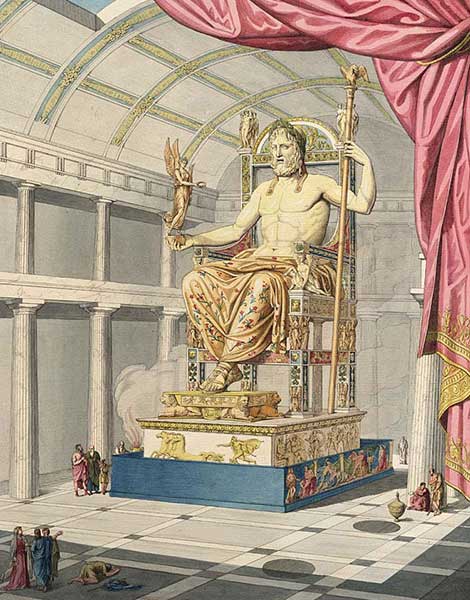
© Quatremère de Quincy – Kansalliskirjasto
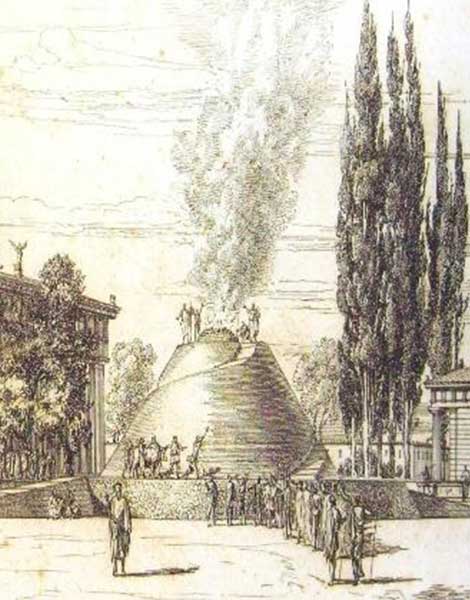
© Ministry of Culture and Sports
Sanctuary of Zeus
The sanctuary at Olympia became a centre of worship for Zeus early in the Geometric Period, following on from a site dedicated to local and pre-Hellenic deities in the preceding Mycenaean Bronze Age. While no buildings from that period survive in the archaeological record, evidence of burnt offerings in the area of the great altar indicate it was a site of religious activity from at least the 10th century BC.
The area subsequently became the Altis, a sacred walled enclosure containing open-air sacrificial altars dedicated to the cult worship of Zeus and his wife, Hera. Numerous votive offerings, including figurines, bronze cauldrons and tripods, were dedicated to the gods by faithful supplicants.
The sanctuary flourished in subsequent centuries, drawing visitors from across the ancient Greek world. In the 5th century BC, the enormous temple of Zeus (470-456 BC) was erected alongside other buildings related to the day-to-day running of the sanctuary, including baths, stoas, and treasuries.
It was here that the famous sculptor, Phidias, made a 12.4 m-tall seated statue of Zeus, layered with gold and ivory. Seated on a giant wooden throne encrusted with gemstones, the statue was erected in the temple around 435 BC and became one the “Seven Wonders of the Ancient World.”
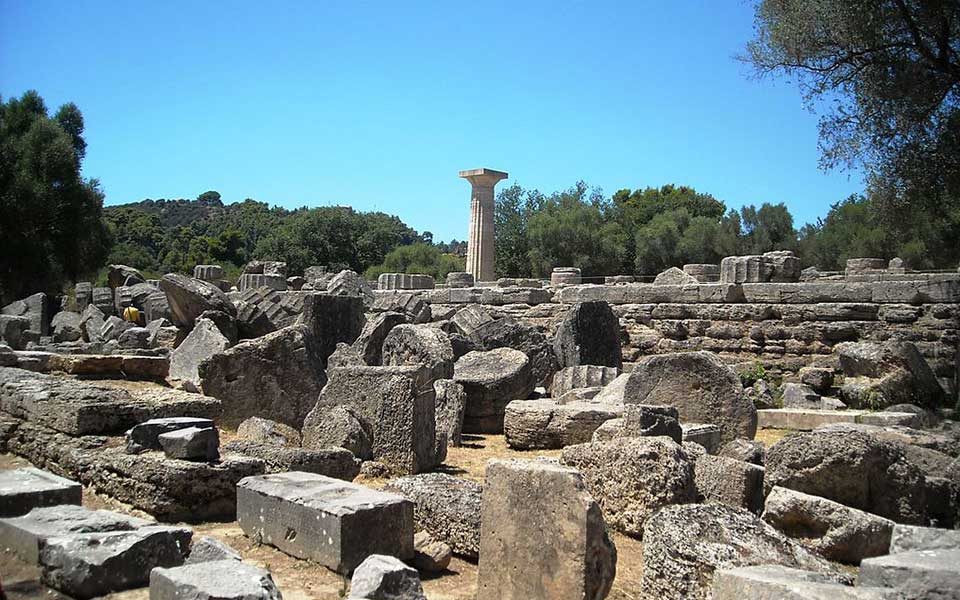
© Elisa.rolle
Olympic games
The sanctuary was also home to the first Panhellenic Olympic festival, organized in the 8th century BC – traditionally dated to 776 BC. The festival included a series of athletic competitions among representatives of the Greek city-states, including running, the long jump, javelin and discus throwing, wrestling, horse racing, and chariot races. During the games, the city-states set aside their conflicts to take part.
The games were continuously held every four years from the 8th century BC to 394 AD, when they were banned by the emperor Theodosius I in a bid to abolish pagan festivals and establish Christianity as the official religion of Rome.

